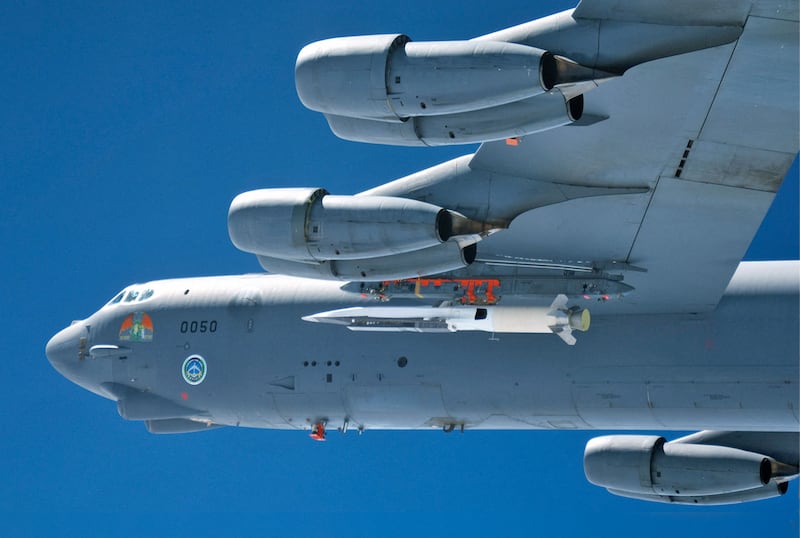The US Air Force claims to have successfully launched a hypersonic missile — capable of travelling at five times the speed of sound, or 1.7 kilometres per second — from a B-52 bomber.
The US Department of Defence has requested $4.7 billion to invest in hypersonic weapons development for its 2023 budget, part of an effort to match Chinese and Russian capabilities that some analysts fear may be ahead of US research into the extremely fast weapons.
"Following separation from the aircraft, the ARRW's booster ignited and burned for expected duration, achieving hypersonic speeds five times greater than the speed of sound," the US Air Force said of the test, referring to the 6,000-kilometres-per-hour Air-launched Rapid Response Weapon tested on Tuesday.
The launch, one of a series of test firings, was conducted off the coast of California and came after Russia said it had successfully fired a Kinzhal hypersonic missile during the war in Ukraine, the first combat use of a hypersonic missile.
Russia said the Kinzhal, delivered from one of its fastest jets the MIG-31K, could reach 10 times the speed of sound. But some experts question whether the Kinzhal fits the US definition of a hypersonic weapon.
US Joint Chiefs of Staff chairman General Mark Milley told a defence committee earlier this week that the Russian missile was not “game-changing”.
“Other than the speed of the weapon, in terms of its effect on a given target, we are not seeing really significant or game-changing effects to date with the delivery of the small number of hypersonics that the Russians have used,” he said.
Russia has also tested the Zircon and Avangard hypersonic missiles, the latter reportedly capable of re-entering Earth's atmosphere after detaching from a ballistic missile travelling at 20 times the speed of sound.
However, US government analysts define hypersonic weapons not simply by their speed.
Existing nuclear ballistic missiles, which are in some cases based on decades-old technology, fly to the edge of Earth’s atmosphere or into space, descending towards their target at many times the speed of sound — in some cases over Mach 20, or four times the minimum speed of a hypersonic missile.
Despite this incredible speed, the US says these are technically not hypersonic weapons, which are “manoeuvring weapons that fly at speeds of at least Mach 5”.
The manoeuvring aspect is key, making it much harder for enemy air defences to intercept.
Ballistic missiles can in some cases be shot down by existing air defence systems such as the US Terminal High Altitude Air Defence system, because their fixed trajectory can be determined by radar and space-based infrared detection systems shortly after launch.
The air defnece system, which travels at Mach 8, is designed to intercept ballistic missile high above the ground, and is said to have maximum altitude after launch of 150 kilometres.
In contrast to a ballistic missile, a hypersonic missile is able to change course in flight and flies on a low trajectory — a design aspect that has challenged researchers for decades because of extreme forces such as drag and friction when changing course at hypersonic speed, which can damage or destroy a weapon.
Unlike the Avangard, which re-enters the Earth's atmosphere, the US ARRW is known as an air-launched weapon.
Aside from trying to match Russia’s capabilities, the US has also been concerned about China’s research into hypersonic weapons.
In October, the US accused China of testing a hypersonic missile launched from a ballistic missile in space, known as a Fractional Orbital Bombardment System.
“What we saw was a very significant event of a test of a hypersonic weapon system, and it is very concerning,” Gen Milley said at the time.
China's foreign ministry denied that it had conducted a weapons test.






